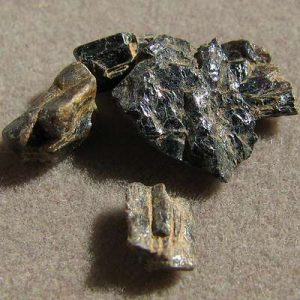Baddeleyite
Baddeleyite is a very unusual Zirconium Oxide mineral and it is rarely seen as a gem that is faceted. It’s an extremely mineral that is dense has a quite high refractive index, although it is generally opaque brownish black to black.
Although the chemistry of Baddeleyite is identical to the diamond that is popular cubic zirconia (CZ), it does not look such a thing enjoy it. CZ is a bright, transparent, highly refractive material which crystallizes into the cubic system while Baddeleyite is opaque or nearly opaque, often black colored and crystallizes in the monoclinic system.
The main sources of Baddeleyite are Rakwana and Balangoda, Sri Lanka. From Monte Somma, Campania, Italy. The Vuoriyarvi carbonatite complex, as well as the Imandrovsky layered intrusion, Kola Peninsula; in the Lukkulaisvaara layered intrusion, Karelia in Russia, big crystals through the Kovdor massif, plus in the Golinski massif. At the Jacupiranga mine, São Paulo, and at Poços de Caldas, Minas Gerais, Brazil. From Bozeman, Gallatin County, Montana, United States Of America. In the Bingo deposit, Kivu Province, Congo (Zaire). From Canada, Angola. At Bloemfontein, as well as in big crystals from Phalaborwa, Transvaal, South Africa. Other occurrences that are minor understood.
| Chemical Formula: | ZrO2 |
| Zirconium Oxide | |
| Molecular Weight: | 123.22 gm |
| Composition: | Zirconium | 74.03 % | Zr | 100.00 % | ZrO2 |
| Oxygen | 25.97 % | O | |||
| 100.00 % | 100.00 % | = TOTAL OXIDE |
| Crystallography: | Monoclinic – Prismatic |
| Crystal Habit: | Crystals commonly tabular and somewhat elongated, or short to long prismatic, to 6 cm; rarely equant; prism faces striated; also botryoidal masses with radially fibrous structure and concentric banding. |
| Twinning: | None |
| Cleavage: | Distinct on {001} |
| Fracture: | Conchoidal |
| Tenacity: | Brittle |
| Moh’s Hardness: | 6.5 |
| Density: | 5.40 – 6.02 (g/cm3) |
| Luminescence: | Blue-green Cathodoluminescence |
| Radioactivity: | Not Radioactive |
| Color: | Colorless to Yellow, Green, Greenish or Reddish Brown, Brown, iron-Black; Colorless to Brown in transmitted light. |
| Transparency: | Transparent; in dark-colored specimens, only in thin fragments. |
| Luster: | Adamantine, Greasy to Vitreous; nearly Submetallic in black crystals |
| Refractive Index: | 2.13 – 2.20 Biaxial ( – ) |
| Birefringence: | 0.0700 |
| Dispersion: | Strong; r > v |
| Pleochroism: |
X = yellow, reddish brown, oil-green; Y = oil-green, reddish brown; Z = brown, light brown. |


